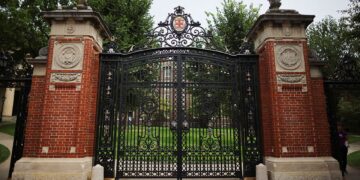In this video we’re going back to the earliest days of this famous Jewish family to see how they managed to build one of the greatest fortunes in history at a time of rampant anti-semitism. This video is brought to you by Skillshare, with whom I’ve partnered to make a series
Of educational videos on the stock market, which you can watch for free by using the link in the description. Our story begins in Medieval Europe. By the 10th century most of Europe was under the domain of Christianity. Political power was invariably tied to religion, which made being a non-Christian very unfavorable.
Perhaps the biggest victims of these circumstances were the Jews. Having no home state of their own to fall back to, the Jews were scattered throughout Europe, and many of them settled in the Holy Roman Empire. This vast multi-ethnic state contained modern day Germany, and like the rest of Europe it
Too wasn’t happy to harbor the Jews. In many cities the Jews we forced to live in particular neighborhoods in what we now call ghettos, and the city of Frankfurt was no exception. From 1462 onwards it confined all the Jews in the city to a single narrow street outside the city walls.
That street came to be known as the Judengasse or the Jewish Alley, and it was made up of numerous tightly packed houses. Back then, the buildings weren’t distinguished by numbers, but by signs. One building could be the house of the “ship”, for example, while another could be the house of the “golden stone”.
The sign on one of those houses was a red shield, or Rothschild in German, and the family living in the house had gone by the same name since at least 1528. Like most Jewish families at the time, the Rothschilds were involved in finance.
You see, in Medieval Europe Christianity forbade anyone from lending money with interest, leaving this otherwise profitable business into the hands of the Jews. Experience with money lending, and by extension anything relating to finance, was passed down generations and the Rothschilds were no exception.
They specialized in exchanging currencies and trading collectible coins and the best one of them all was Mayer Rothschild. He took up the family business in 1763 and his extensive collection of coins attracted the wealthiest aristocrats in the Holy Roman Empire. Among them was Crown Prince Wilhelm of Hesse.
The prince met Mayer in 1769 and quickly learned to trust him with all matters relating not just to collectible coins, but to anything financial. When Wilhelm came into power as Wilhelm IX of Hesse in 1785 he hired Mayer to manage his finances as his hofjude or “Court Jew”.
Now, keep in mind, this was a common arrangement in Central Europe: the nobility would outsource their finances to Jews in exchange for protection, money and sometimes even actual noble titles. Mayer oversaw the taxes collected in Wilhelm’s lands and had to keep his money safe, a task that became very difficult in 1806.
That is the year when Napoleon invaded Hesse, driving Wilhelm into exile and putting his fortune at risk. But Mayer was smart and he was ready for Napoleon. In 1798 he had sent one of his five sons, Nathan Rothschild, to London to start a currency business similar to his father’s.
With this foundation in place, Mayer had no trouble moving Wilhelm’s fortune to London, where he then loaned it out to the British Crown. In essence, Wilhelm was funding the British to fight Napoleon in order to restore his power. Now, Mayer died in 1812, leaving Wilhelm’s fortune and the Rothschild legacy in the hands
Of Nathan. He remained in London, while his eldest brother took over the original Frankfurt business. Meanwhile the three remaining brothers scattered throughout Europe, establishing branches in important European capitals. Despite the distance, the brothers applied a unified strategy: they would loan out their money to the aristocracy and to local governments.
The brother in France, for example, became the banker of Leopold I of Belgium, while the one in Vienna would lend money to last Holy Roman Emperor, Francis II. In 1818 he would grant all five brothers the noble title of baron, finally elevating the Rothschilds to nobility.
Throughout the next decades, whenever a European government collapsed and was replaced, it was the Rothschilds who were first in line to provide loans. That’s exactly what happened after the French Revolution of 1830 or after the fall of the Holy Roman Empire.
The loaning business was immensely successful: the Paris branch, for example, grew from the equivalent of $5 million in 1820 to over half a billion dollars in 1850. In essence, the five Rothschild families back then provided the same service that the International
Monetary Fund provides today: they stabilized major currencies and provided loans to governments, doing both at a great profit. Of course, throughout the 19th century the five branches also made many private investments, beyond their government loans. In 1868 they purchased one of the most valuable wine estates in France.
In 1875 they acquired a minority stake in the Suez Canal from Egypt, while in 1883 they funded the development of the first major oil well in the old world, challenging the Rockefeller monopoly in America. They also became majority shareholders in the diamond monopoly of De Beers and in Rio
Tinto, one of the world’s largest mining companies. But during the 20th century, the newer generations of the five Rothschild families made fewer and fewer successful moves. In 1900 the branch in Naples actually became extinct when the last male heir died without children, leaving his fortune to the branch in Paris.
A somewhat amusing fate befell the branch in Germany: there the two Rothschild heirs had 11 girls and not a single boy, splitting up the fortune and disintegrating its power. The Rothschild branch in Austria was doing well, until Hitler came to power, of course.
When Nazi Germany annexed Austria in 1938, the Rothschilds had to sell their banking operation for a fraction of its true worth. Most of them escaped with whatever liquid assets they had, but at least one was captured
On his way out and in fact he was only released after paying the largest ransom in history at the time, $21 million. The ransom effectively bankrupted the Austrian Rothschilds, while the Nazis seized all their mansions, businesses and art. A few years later exactly the same thing happened to the branch in Paris.
In fact, the collections they had were so exquisite that Hitler and Hermann Goering personally went there to observe them and to pick out what they liked. Through the detailed inventories compiled by the Nazis we know that they seized a total
Of 5003 objects from the Rothschild collections and the vast majority of them were never returned. The French Rothschilds had some luck restoring their businesses after the war, but then the French socialists nationalized their bank in 1981. In the end only the English branch survived the 20th century with its fortune intact.
Its patriarch during the second half of the 20th century was Sir Evelyn Rothschild, who even today is the financial advisor to Queen Elizabeth. He retired from leadership in 2003, passing on the mantle of patriarch to David Rothschild, a member of the branch in Paris who then merged both branches into a single entity.
He ensured the secrecy of the family’s fortune by establishing a complex network of shell companies starting off in Switzerland but ending God knows where. But at the end of the day, while the 19th century banking family might have been one
Of the richest of its day, today the Rothschild’s are a shadow of their former glory. In fact, if you open up the Forbes list of billionaires, the first Rothschild appears at #822: that’s Jeff Rothschild, a man who actually has nothing to do with the Rothschild banking family.
He has no blood connection, he just happens to share the name, in the same way that two men bearing the family name Goldman might not be related. The first actual Rothschild appearing on this list is only at #1284 and his wealth is tied to an asset management company that manages other people’s money.
So in the end it turns out that the once powerful Rothschild family is really nothing more but a blip on the radar of global wealth. And it honestly makes sense; statistically, 90% of wealthy families lose their fortunes by the third generation.
It’s just hard to be financially responsible when you’re born into wealth and have no respect for money. Why bother learning how to invest and grow your wealth when you can just spend whatever grandpa left you?
Well, if you want to escape this vicious cycle, or at least kick the can down the road for another generation, you’ll be happy to learn that I made a series of education videos on Skillshare about how the stock market works.
In these short animated clips I cover basic topics like what is a stock or an ETF or why companies go public. Unlike the Rothschilds of the 19th century, the first 500 of you can access all this information
Right now for free by registering for a 2-month free trial of Skillshare using the link in description. Once you’ve registered search for “investing 101” or follow the link I’ve conveniently left in the comments below. If you don’t know, Skillshare is the best online learning platform that has thousands
Of videos on really any skill you can imagine, which now also includes my own series. Of course, when you’re done watching I’d love to hear what you think about this new series and hey, maybe one day you’ll create a wealthy dynasty of your own so that future
Generations can make conspiracy theories about it. Anyway, thank you for watching. If you liked this video make sure to give it a thumbs up and also consider subscribing. A big thank you to all my patrons for supporting me and for making Business Casual possible.
We’ll see each other again in two weeks, and until then: stay smart.

































 Reaction & Commentary
Reaction & Commentary














